| 1 | A small Mexican rattlesnake |
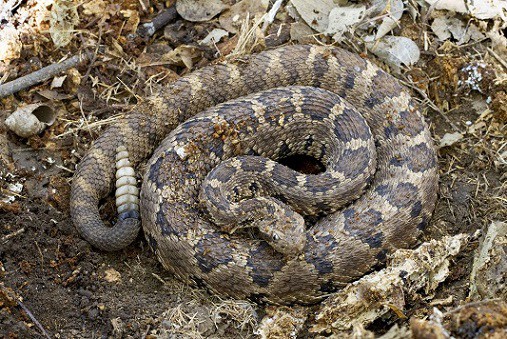
Mexico’s Baja California region lies directly south of US California, and is a long finger of land which measures 760 miles from head to toe. It’s home to many snake species found nowhere else, including the harmless Mosauer’s ground snake and cape thread snake. Not all are so friendly, and the peninsula’s resident venomous villain is the Baja California rattlesnake (Crotalus enyo).
This is a smallish species averaging at 50-75cm, with an absolute record of just 89.8cm, versus 233.7cm for a western diamondback rattlesnake. Crotalus enyo is found only in Baja California, inhabiting the southern two thirds of the peninsula, and getting nowhere close to the border with US California. They’re a secretive species which cause very few deaths, but have all the usual rattlesnake skills: a corrosive venom, vertical pupils, heat sensing pits, and 4-8 segmented rattle scales which produce a piercing buzzing.
A small, narrow head is one of their signature characteristics, as well as unusually large eyes for a rattlesnake. Baja California rattlesnakes are adorned with 28-42 blotches, which are dark brown or orange, and always with a blacker outline. From the neck, the blotches begin as a distorted rectangle, before morphing into a sloppy hexagon at mid body.
While these blotches are nearly always present, Baja California rattlesnakes vary significantly in colour. They’re mainly rich beige and darker brown, but some are grey-blue with almost orange blotches. Others are a far more consistent sandy beige, with faint blotches, as though attempting to blend in with sand.
| 2 | Dangerous but survivable |
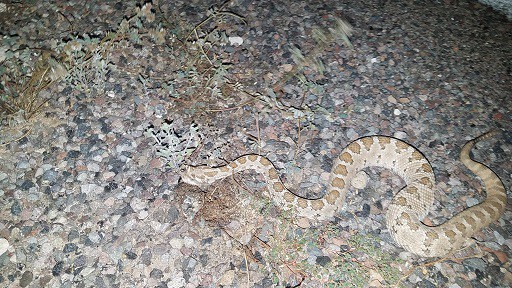
A study compared 4 rattlesnakes of western Mexico. With an LD50 rating of 0.35mg, the speckled rattlesnake (C. mitchelli) was the deadliest, and the only rattlesnake with strongly neurotoxic symptoms. The Baja California rattlesnake ranked in second at 1.56mg, followed by the Santa Catalina rattlesnake (2.98mg) and red diamond rattlesnake (9.21mg). However, Baja California rattlesnakes are softened further by having a relatively small venom yield. The average is 31mg per bite, compared to 400mg for an eastern diamondback, or 364mg for the red diamond rattlesnake.
Typical bite symptoms include pain, swelling, blistering, and spontaneous bleeding from the bite mark. There’s no confirmed neurotoxins in Crotalus enyo venom. Instead, this has a typical rattlesnake venom, with a mixture of haemorrhagins and anticoagulant toxins.
The rattlesnake family has well over 35 species, with some recognising over 50. In 2016, a giant evolutionary tree of all living snakes was released, after endless, laborious genetic analysis. It concluded that the Baja California rattlesnake’s closest relatives were the sidewinder (Crotalus cerastes) and Mexican small-headed rattlesnake (Crotalus polystictus). The former lives in Arizona deserts, including Death Valley, plus a chunk of northeast Baja California. The latter lives nowhere near Baja California, sticking to southern central Mexico, including the outskirts of Mexico city.
| 3 | Habitat: dry forest and shrubland |
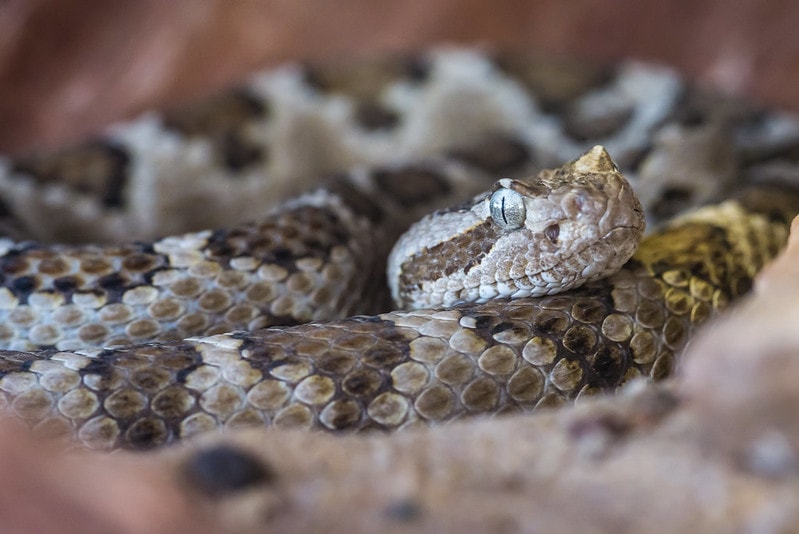
The big characteristic of Baja California rattlesnakes is that they love shrub cover. A rock rattlesnake loves rock fields, but Crotalus enyo would rather slither through a twisting maze of leafy plants and low, disguising branches, which make spotting them exceedingly difficult for a bird flying overhead. A study from the Cape region of Baja California concluded that their favourite habitats are sparse lowland forest, and xeric shrubland with a gentle slope of approximately 16.5 degrees. However, shrubby areas were their favourite habitat within the forest as well.
Unlike a sidewinder, Baja California rattlesnakes avoid true deserts, and it’s rare to find them near towns. Within their habitats, males are more common in disguised spots with thicker vegetation. This is because females move less distance per day, and when pregnant, they stay in open spots to warm their bodies in sunlight, in preparation for the upcoming baby batch. Females also like areas with large rocks, with large cracks that they can lay their precious newborns in.
This is firmly a low altitude rattlesnake. Crotalus enyo rarely appears higher than 800 metres above sea level, and their typical range is 300-500 metres.
| 4 | Reluctant to rattle |
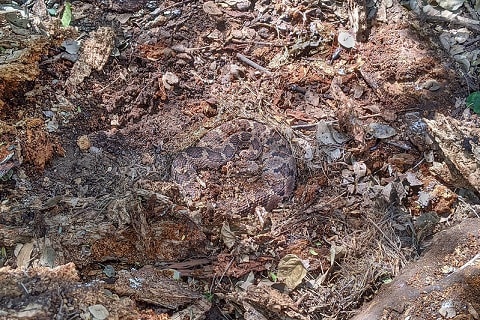
Crotalus enyo is a hard species to find, partly because of their shrubby disguises, but also because they rely on camouflage heavily. Though with well developed rattle segments, they’re surprisingly reluctant to use them. Its unlikely to hear an angry rattle from nowhere as you walk innocently through a dry forest. Instead, Baja California rattlesnakes rely on camouflage, with subtle beige brown patterns that blend effortlessly into vegetation. They have a patient temperament and don’t fly into a rage just for the sake of it.
Because they seek prey actively, Baja California rattlesnakes commonly end up as roadkill. A study in the Cape region sought them out, and only found 21 (which was very low already). 16 of these were dead on roads, and just 5 were alive and well in their habitats. Crotalus enyo also has a liking for old mammal burrows, making for an instant base which they don’t need to construct themselves.
| 5 | Strongly nocturnal |
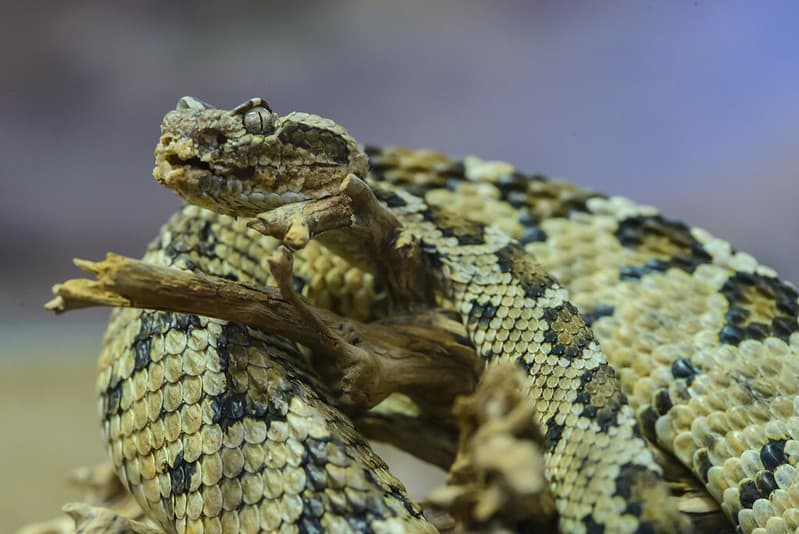
Baja California rattlesnakes are a nocturnal species, virtually never moving decent distances during the day. They favour the earliest part of the night, with one study finding their single most active minute to be 20:04pm. Crotalus enyo also skips hibernation, being active all year, though they’re minimally active in January and December. Their presence has a strong correlation with rainfall, as while normally sluggish, they suddenly rev up in the rainy season from August to October and become far more adventurous, crossing roads and speeding across bare soil.
Minimum temperatures are also important for Crotalus enyo. Below 25.5C, it’s unlikely to find them moving. A humid, sticky night is the best time to find this rattlesnake, armed with a torch, a camera, and a car parked close by which you can easily flee to.
The same study as above analysed the cape region of Baja California’s far south. It found that red diamond rattlesnakes were the most abundant family member, followed by the Baja California rattlesnake, and black-tailed rattlesnake in last.
| 6 | Diet: mammals with reptile snacks |
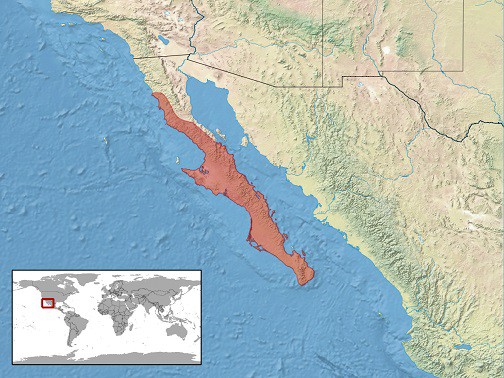
The speckled rattlesnake (Crotalus mitchellii) nearby is an ambush predator, lying in wait before pouncing. Meanwhile, Baja California rattlesnakes are active predators, prowling their xeric shrubland domain and seeking out prey themselves. They have a standard diet for a rattlesnake, focussing on mammals.
In a 2001 study, scientists rummaged through museum collections gathering dust in cupboards, and found 113 preserved Baja California rattlesnakes. Stomach analysis revealed 63 prey, still inside after all those years. The breakdown was 60.3% mammals, 33.3% reptiles, and 6.4% centipedes. These are very similar proportions to the Mojave rattlesnake of Arizona and the west diamondback rattlesnake. Many prey were too digested and hard to identify, but the spiny pocket mouse, Botta’s pocket gopher, and desert iguana (Dipsosaurus dorsalis) were detectable.
Meanwhile, a 2016 study examined Baja California rattlesnakes from the wild, in the southern Cape region. 21 snakes were located, and the prey breakdown was 83.34% mammals and 16.66% reptiles. This time, they found 16 spiny pocket mice (Chaetodipus spinatus), so all signs suggest that this is their favourite prey, in turn making Crotalus enyo the spiny mouse’s arch nemesis.
| 7 | Hunted by coachwhips |
This rattlesnake also falls victim to fellow snakes, specifically the Baja California coachwhip (Masticophis fuliginosus), which is perhaps the peninsula’s most commonly sighted species. This is just as fast and manic as its US coachwhip cousin, and is already confirmed to prey on snakes like Sonora semiannulata. In August 2007, in Sierra del Mechudo municipality, scientists saw this snake biting the neck of a Baja California rattlesnake, on the slope of a rocky arroyo. It spent 4 minutes ripping and tearing, but then spotted the scientists, and retreated to the bushes, leaving its prize to die. The scientists approached the rattlesnake’s body and found bites on the neck, tail and mid-body.
This was the first time this predator-prey combo had been spotted, but US coachwhips are confirmed to eat eastern diamondback and red diamond rattlesnakes, despite their corrosive venom.
Baja California rattlesnakes have a relatively small head for a rattlesnake. Consequently, they can’t gape their mouths as freakishly wide, and tend to stick to smaller prey.
| 8 | Grips its prey tightly |
Baja California rattlesnakes are focussed and disciplined hunters, according to a 1980 study. Three species were tested in a lab: the south American rattlesnake (Crotalus durissus), Baja California rattlesnake (C. enyo), and prairie rattlesnake (Crotalus viridis).
Generally, the rattlesnakes clung onto smaller prey, while releasing larger, more dangerous prey, and allowing the venom to kill them first before slithering over and swallowing. But Baja California rattlesnakes stuck to this rule the closest. They clung onto small mammals without exception, and released large prey with only one exception. The Baja California rattlesnake takes no chances, while its cousins are somewhat sloppier, less regimented. It was a well-conducted experiment, as the Baja Cali rattlesnakes were either offered a small or particularly large house mouse (Mus musculus). They were the same species, so the only variation was size.
One possibility is that as Baja California rattlesnakes live in dry shrubland, it’s far easier for small mice and mammals to get lost after being bitten, even if they’re just a few metres away. Consequently, it makes sense to hold onto them, compared to if they were on a bare grassy plain.
| 9 | No maternal instincts |
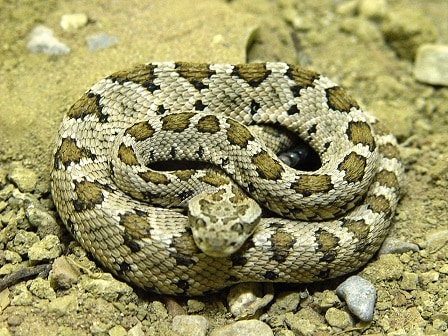
Baja California rattlesnakes lay live young, in small batches of 2 to 9. Newborns range from 21-24cm, and shed their first skin after ten or eleven days. Some species change colour in adulthood, such as the Arizona black rattlesnake, which loses its blotchy patterns to become a more consistent midnight black. But the Baja California rattlesnake barely changes over its life, entering the world with the same parched beige style it dies with.
Unlike a pygmy rattlesnake, which stays with their babies for 10 days, Crotalus enyo mothers have no maternal instincts. They abandon their young immediately, leaving them to fend for themselves. Fortunately, newborns are the opposite of helpless babies; they can strike at mice and swallow them from day 1. Like as adults, they always hold onto smaller prey while the venom spreads through their veins.
Watching them be born is kind of disturbing. Through born live, some appear in gelatinous membranes, which they fight to escape, writhing and thrashing for 5-15 minutes, as though impatient to get started. In other cases, a live baby simply crawls out the mother and slithers away, immediately beginning its life as a venomous Mexican serpent.
| 10 | The rattlesnake neighbourhood |
How many rattlesnakes live in Baja California? At least 6 and possibly as many as 8, if you discount those found solely on small islands (like the Santa Catalina rattlesnake). The Baja California rattlesnake inhabits the southern two thirds. Then there’s the speckled rattlesnake (Crotalus mitchelli), which is found all over Baja California, from head to toe, and also three US states: California, Nevada and Arizona. The red diamond rattlesnake occupies all of Baja California, plus California as far as the outskirts of Los Angeles. Those three are the most common. But there’s also…
Pacific rattlesnake (Crotalus oreganus) – a staple of the US west coast, which also inhabits the northwest of Baja California.
West diamondback rattlesnake – this 2 metre killer inhabits the extreme northeast of Baja California.
Sidewinder – mainly a staple of Arizona, famous for living in the sand dunes of Death Valley itself. But sidewinders inhabit a large swathe of northeast Baja California.
Black-tailed rattlesnake – sightings are scarce, but this Arizona species may just reach the extreme northeast of Baja California.
Tiger rattlesnake – in a similar position to the black-tail.
The likes of ridge-nosed rattlesnakes, Arizona black rattlesnakes and rock rattlesnakes get nowhere near Baja California. See this article for a guide to rattlesnakes of the US south.
